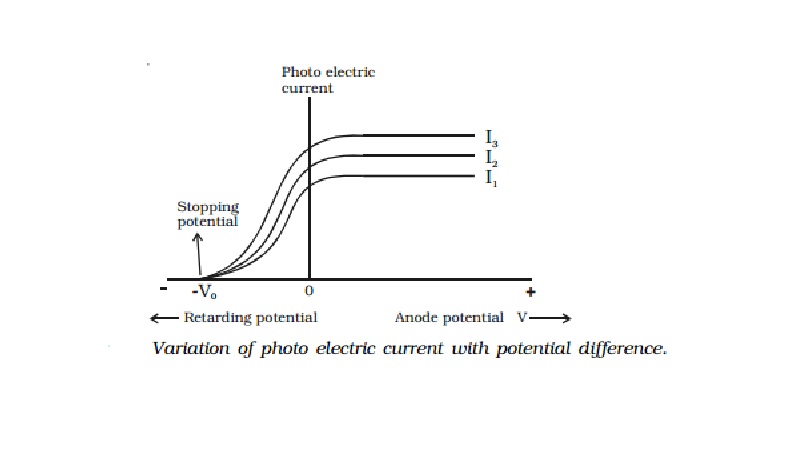Chapter: 11th 12th std standard Class Physics sciense Higher secondary school College Notes
Effect of potential difference on the photoelectric current

Effect of potential difference on the
photoelectric current
For a given metallic surface C, keeping the
intensity (I1) and
frequency of the incident radiation constant, the effect of potential
difference between the plates on the photoelectric current can be studied. Fig shows the variation of photo electric current with the potential difference
V between the two plates. When the positive potential of A is increased, the
photoelectric current is also increased. However, if the positive potential is
further increased such that it is large enough to collect all the photo
electrons emitted from the plate C, the photoelectric current reaches a certain
maximum value and this current is known as saturation current. If the potential
of the plate A is made negative, the photocurrent does not immediately drop to
zero but flows in the same direction as for positive potential. This shows that
the photo electrons are emitted from the plate C with finite velocity. If the
negative or retarding potential is further increased, the photo current
decreases and finally becomes zero at a particular value. Thus, the minimum
negative (retarding) potential given to the anode for which the photo electric
current becomes zero is called the cut-off or stopping potential.

If m
is the mass of the photo electron emitted with a velocity vmax then the kinetic energy associated with it is ½ mv2max.
Since at the stopping potential Vo,
the fastest electron is just prevented from reaching the plate A, workdone in
bringing the fastest electron to rest = kinetic energy of the fastest electron.
Since at the stopping potential Vo, the fastest electron is just
prevented from reaching the plate A, workdone in bringing the fastest electron
to rest = kinetic energy of the fastest electron.
eVo
= ½ mv2max
The above equation indicates that the stopping
potential depends upon the velocity of the fastest electron.
The experiment is repeated with the incident
radiation of same frequency, but of higher intensities I2 and I3.
It is found from the graph, the saturation currents are proportional to the
intensities of the radiation. But, the stopping potential remains the same for
all the intensities. Thus, for a given frequency of incident radiation, the
stopping potential is independent of its intensity.
Related Topics